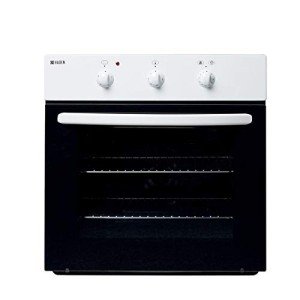
The term "hob" might not be as widely recognized as other British cultural icons like the Beatles or the Tower of London, but it holds a special place in the hearts of many UK residents and enthusiasts. Hobs, often referred to as stoves or cooktops in other parts of the world, are more than just appliances; they are integral components of British culinary heritage and home life. This article delves into the rich history, current trends, and cultural significance of hobs in the UK, providing a comprehensive overview of their enduring appeal.
A Brief History of Hobs in the UK
The concept of a hob dates back to the early days of cooking, when hearths and open fires were the primary means of preparing meals. The evolution of hobs in the UK can be traced through several key periods:
The Hearth Era (Pre-18th Century)
- Cooking was primarily done on open hearths, which were large, open fireplaces in the center of the kitchen.
- These hearths were often surrounded by brick or stone and included a variety of cooking tools such as pots, pans, and spits.
The Stove Revolution (18th-19th Century)
- The industrial revolution brought significant changes to home cooking, with the introduction of enclosed stoves.
- These stoves were more efficient, allowing for better heat control and a reduction in smoke and ash.
- The range cooker, a large, multifunctional stove, became a staple in many British homes, combining a cooktop, oven, and sometimes even a water boiler.
Modernization (20th Century)
- The 20th century saw the advent of gas and electric hobs, which offered even greater convenience and safety.
- The introduction of Built In Ovens Sale (Www.Ovensandhobs.Uk)-in hobs and cooktops in the 1950s and 1960s transformed kitchen design, making them more compact and efficient.
Contemporary Hobs (21st Century)
- Today, hobs come in a variety of styles, including induction, ceramic, and gas.
- Smart technology has also been integrated into modern hobs, allowing for remote control and advanced cooking features.
Types of Hobs in the UK
The UK market offers a diverse range of hobs to suit different preferences and needs:
Gas Hobs
- Gas hobs are the most traditional type, offering precise control over heat levels.
- They are favored by many chefs and home cooks for their responsiveness and the ability to see the flame.
Electric Hobs
- Electric hobs are widely used and come in two main types: coil and ceramic.
- Coil hobs are the simplest and most affordable, while ceramic hobs offer a sleek, modern look and easy cleaning.
Induction Hobs
- Induction hobs are the latest innovation, using magnetic fields to heat cookware directly.
- They are highly efficient, safe, and fast, making them a popular choice for modern kitchens.
Range Cookers
- Range cookers, such as those from brands like Aga and Rayburn, are large, multifunctional appliances that combine a cooktop and oven.
- They are often seen in traditional British homes and are known for their durability and heat retention.
The Cultural Significance of Hobs in the UK
Hobs play a crucial role in British culture, beyond their practical use in cooking. They are symbols of comfort, tradition, and community:
Culinary Traditions
- Many traditional British recipes, such as roast dinners and stews, are best prepared on a hob.
- The hob is where families gather to cook together, passing down recipes from one generation to the next.
Social Gatherings
- The kitchen, with the hob as its focal point, is often the heart of the home.
- Friends and family frequently gather around the hob, sharing stories and enjoying the aromas of cooking.
Design and Aesthetics
- In modern British homes, the hob is not just a functional appliance but also a design element.
- Many people choose hobs that complement their kitchen decor, from vintage styles to high-tech, minimalist designs.
Current Trends in Hob Design
The UK market is constantly evolving, with new trends in hob design and technology. Here are some of the most popular trends:
Induction Cooking
- Induction hobs are becoming increasingly popular due to their energy efficiency and rapid heating capabilities.
- They are also safer, as the surface does not get hot, reducing the risk of burns.
Smart Hobs
- Smart hobs are equipped with features like Wi-Fi connectivity, allowing for remote control and integration with other smart home devices.
- They often come with built-in features like cook time management and recipe suggestions.
Eco-Friendly Options
- With a growing awareness of environmental issues, many manufacturers are focusing on eco-friendly hobs.
- These hobs use less energy and are made from sustainable materials.
Customization
- Customizable hobs, where users can choose the size, color, and style, are gaining popularity.
- This allows for a more personalized cooking experience and better integration with the kitchen design.
FAQs About Hobs in the UK
What is the most popular type of hob in the UK?
- Gas hobs remain the most popular, particularly in traditional and semi-detached homes. However, induction hobs are gaining ground due to their advanced features and efficiency.
How do I choose the right hob for my kitchen?
- Consider your cooking habits, kitchen layout, and budget. Gas hobs are ideal for those who value precise control, while electric and induction hobs are better for those who prioritize ease of use and maintenance.
Are induction hobs safe?
- Yes, induction hobs are generally safer than gas or electric hobs. They heat the cookware directly, leaving the surface cool to the touch, which reduces the risk of burns.
Can I install a hob myself?
- While some electric hobs can be installed by a competent DIYer, it is recommended to hire a professional for gas and induction hobs. Proper installation ensures safety and optimal performance.
How do I clean a ceramic hob?
- Ceramic hobs are easy to clean. Use a damp cloth to wipe away spills immediately after cooking. For tough stains, use a specialized cleaner designed for ceramic surfaces.
What is the lifespan of a hob?

- The lifespan of a hob can vary depending on the type and usage. Gas and electric hobs typically last around 10-15 years, while induction hobs can last up to 20 years with proper care.
Hobs in the UK are more than just cooking appliances; they are integral to the fabric of British home life. From the traditional gas stove to the cutting-edge induction hob, each type has its own unique features and cultural significance. Whether you are a seasoned chef or a novice cook, choosing the right hob can enhance your culinary experience and make your kitchen a more welcoming space. As technology continues to advance, the future of hobs in the UK looks bright, with innovations that promise to make cooking even more efficient and enjoyable.
Tips for Maintaining Your Hob
- Regular Cleaning: Keep your hob clean to prevent buildup of food and grease, which can affect performance.
- Check for Damage: Regularly inspect your hob for any signs of damage, such as cracks or loose parts, and address them promptly.
- Use the Right Cookware: Ensure that your cookware is compatible with your hob, especially if you have an induction cooktop.
- Follow Manufacturer Instructions: Always refer to the user manual for specific maintenance and cleaning instructions for your hob model.
By understanding the history, current trends, and cultural significance of hobs in the UK, you can appreciate their role in British life and make an informed decision when it comes to choosing and maintaining your own hob.








